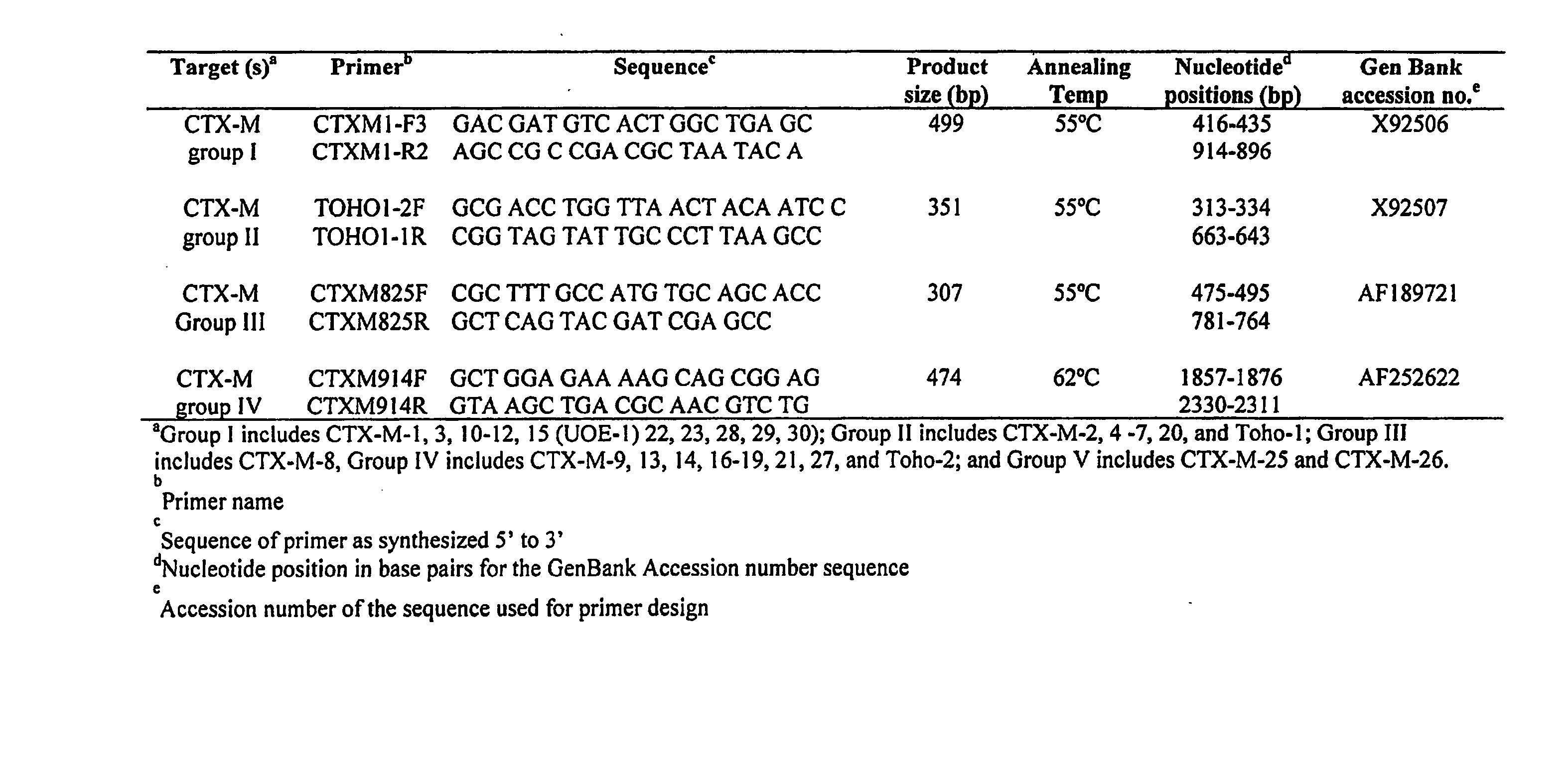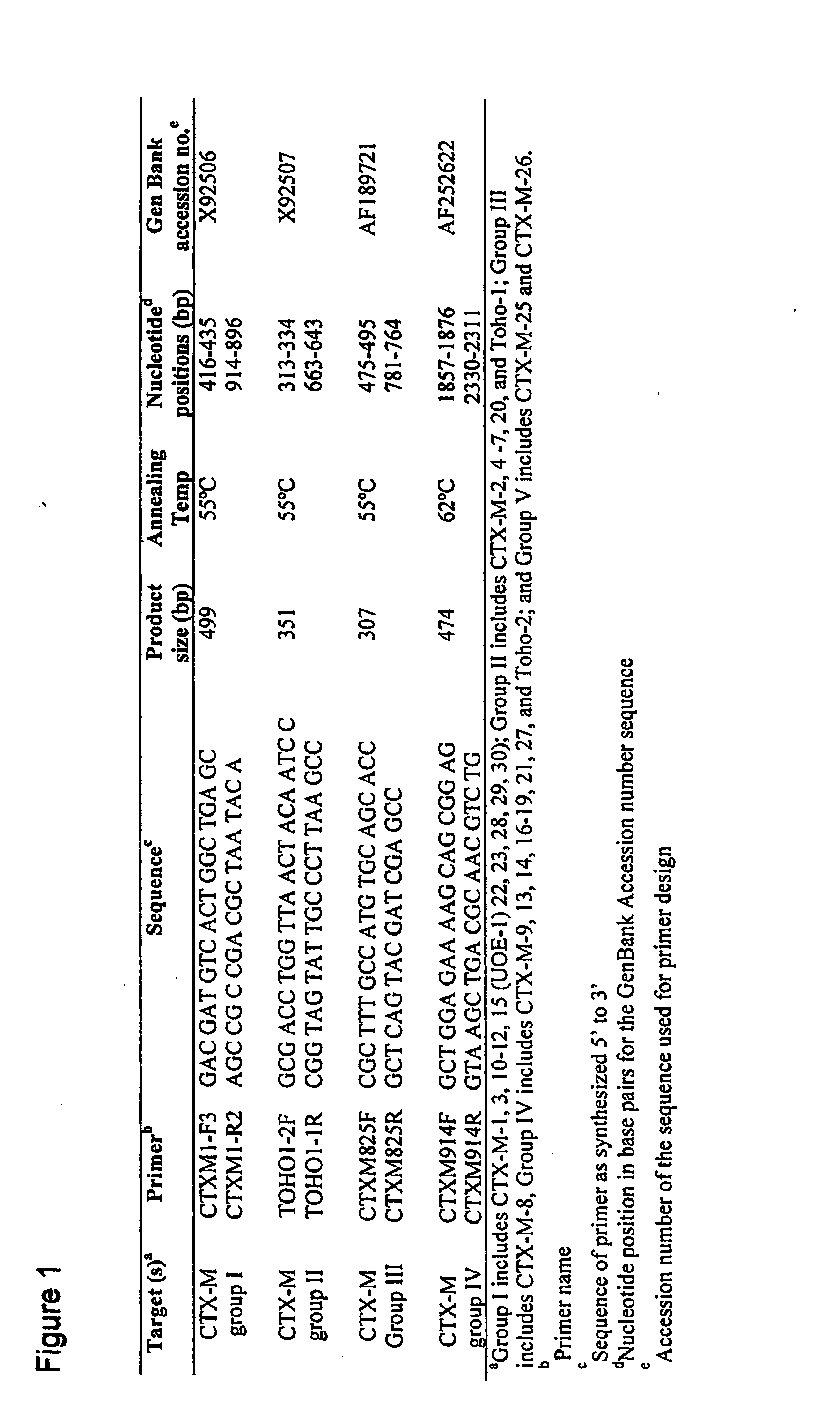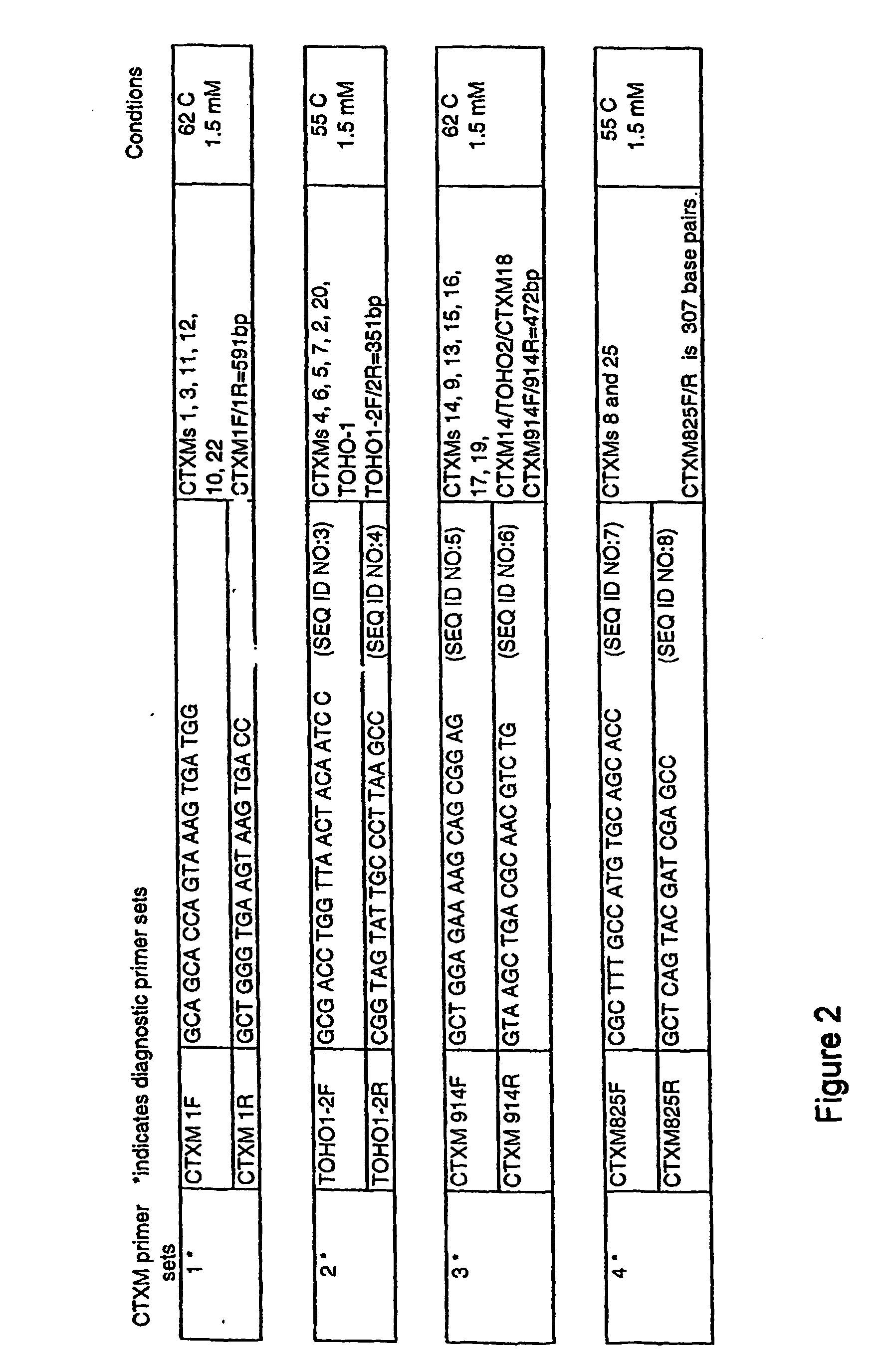Primers for Use in Detecting Beta-Lactamases
a technology of beta-lactamases and primers, which is applied in the field of primers for detecting beta-lactamases, can solve the problems of increasing the difficulty of identifying effective therapies for infected patients
- Summary
- Abstract
- Description
- Claims
- Application Information
AI Technical Summary
Benefits of technology
Problems solved by technology
Method used
Image
Examples
example 1
CTX-M Type-Specific Identification in Enterobacteriaceae Using CTX-M Family-Specific Primers
Methods:
[0060] Twenty two isolates representing E. coli (Ec), Citrobacter freundii (Cf) and C. koseri (Ck) were studied. All of these strains had MICs of greater than (>) 32 micrograms per milliliter (mg / ml) of cefotaxime, >16 mg / ml of cefepime, and ranged between 1 to 8 mg / ml for ceftazidime. Dendrogram analysis of CTX-M genes deposited in GenBank was performed, and based on these analyses, known CTX-M-genes were divided into four families. Based on these families, four sets of family-specific primers were designed. Specificity of the primers was tested on all 22 of the isolates.
[0061] Polymerase Chain Reaction (PCR) amplifications were carried out under conditions as indicated in FIG. 2, which shows diagnostic primer sets and PCR conditions, with hybridization temperature indicated in degrees Centigrade and 1.5 millimolar (mM) MgCl2 concentration. Selected PCR products were then sequenc...
example 2
Identification of β-lactamase Genes in Clinical Strains Producing Extended-Spectrum β-lactamases Using CTX-M Family-Specific Primers
Methods:
[0064] A total of 175 isolates representing E. coli (n=168), K. pneumoniae (n=7) were studied. Minimum inhibitory concentrations (MICs) to the following drugs were determined by Vitek (Vitek AMS; bioMérieux Vitek 5 Systems Inc., Hazelwood, Mo.); piperacillin (PIP), piperacillin / tazobactam (TZP), cefpodoxime (CPD), cefotaxime (CTX), ceftazidime (CAZ). The quality control strains used for this study were E. coli ATCC 25922, E. coli 35218, Pseudomonas aeruginosa ATCC 27853, Staphlylococcus aureus ATCC 29213, and K. pneumoniae ATCC 700603. Throughout this study, results were interpreted using National Committee for Clinical Laboratory Standards (NCCLS) criteria for broth dilution.
[0065] The presence of ESBLs was evaluated in both the control strains and the recent clinical isolates. Screening was performed with Vitek (Vitek AMS; bioMerieux Vitek...
example 3
Population-Based Surveillance for ESBL-Producing E. coli Infections
Methods:
[0070] A total of 157 isolates were collected from a population-based surveillance of ESBL-producing E. coli infections. The E. coli was isolated by standard techniques, and susceptibilities to antimicrobial agents were determined using Vitek AMS (bioMérieux Vitek Systems). The presence of an ESBL was established on the basis of NCCLS guidelines. All strains with an MIC of cefpodoxime of ≧8 μg / mL were subjected to the NCCLS disk confirmation tests by cefotaxime (CTX; 30 μg) and ceftazidime (CAZ; 30 μg) disks in combination with 10 μg of clavulanate (CLA). The results were interpreted using NCCLS criteria.
[0071] PCR amplification for CTX-M β-lactamase genes was performed using a Thermal Cycler 9600 instrument (Applied Biosystems, Norwalk, Conn.) with standard PCR conditions, as described in Example 1 using primer pairs for CTX-M Groups 1-5 β-lactamases, set forth as SEQ ID NO. 1 through SEQ ID NO. 8 indica...
PUM
| Property | Measurement | Unit |
|---|---|---|
| temperatures | aaaaa | aaaaa |
| temperature | aaaaa | aaaaa |
| temperature | aaaaa | aaaaa |
Abstract
Description
Claims
Application Information
 Login to View More
Login to View More - R&D
- Intellectual Property
- Life Sciences
- Materials
- Tech Scout
- Unparalleled Data Quality
- Higher Quality Content
- 60% Fewer Hallucinations
Browse by: Latest US Patents, China's latest patents, Technical Efficacy Thesaurus, Application Domain, Technology Topic, Popular Technical Reports.
© 2025 PatSnap. All rights reserved.Legal|Privacy policy|Modern Slavery Act Transparency Statement|Sitemap|About US| Contact US: help@patsnap.com



